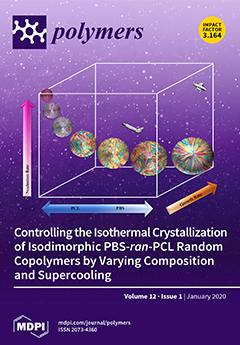As a material for application in the life sciences, a new composite material, geopolymer/CeO
2 (GP_CeO
2), was synthesized as a potential low-cost solid electrolyte for application in solid oxide fuel cells operating in intermediate temperature (IT-SOFC). The new materials were obtained
[...] Read more.
As a material for application in the life sciences, a new composite material, geopolymer/CeO
2 (GP_CeO
2), was synthesized as a potential low-cost solid electrolyte for application in solid oxide fuel cells operating in intermediate temperature (IT-SOFC). The new materials were obtained from alkali-activated metakaolin (calcined clay) in the presence of CeO
2 powders (x = 10%). Besides the commercial CeO
2 powder, as a source of ceria, two differently synthesized CeO
2 powders also were used: CeO
2 synthesized by modified glycine nitrate procedure (MGNP) and self-propagating reaction at room temperature (SPRT). The structural, morphological, and electrical properties of pure and GP_CeO
2-type samples were investigated by X-ray powder diffraction (XRPD), Fourier transform infrared (FTIR), BET, differential thermal and thermogravimetric analysis (DTA/TGA), scanning electron microscopy (FE-SEM), energy dispersive spectrometer (EDS), and method complex impedance (EIS). XRPD and matrix-assisted laser desorption and ionization time-of-flight (MALDI-TOF) analysis confirmed the formation of solid phase CeO
2. The BET, DTA/TGA, FE-SEM, and EDS results indicated that particles of CeO
2 were stabile interconnected and form a continuous conductive path, which was confirmed by the EIS method. The highest conductivity of 1.86 × 10
−2 Ω
−1 cm
−1 was obtained for the sample GP_CeO
2_MGNP at 700 °C. The corresponding value of activation energy for conductivity was 0.26 eV in the temperature range 500–700 °C.
Full article






